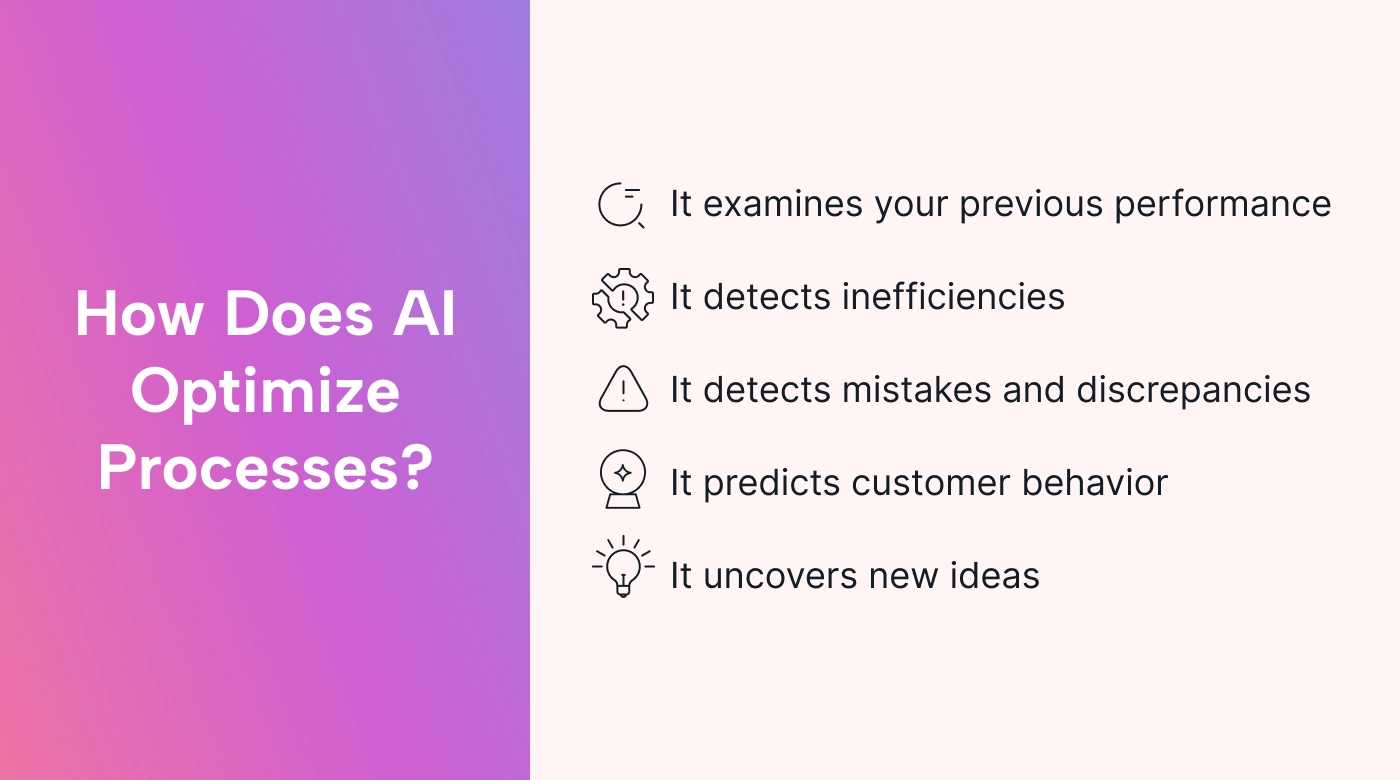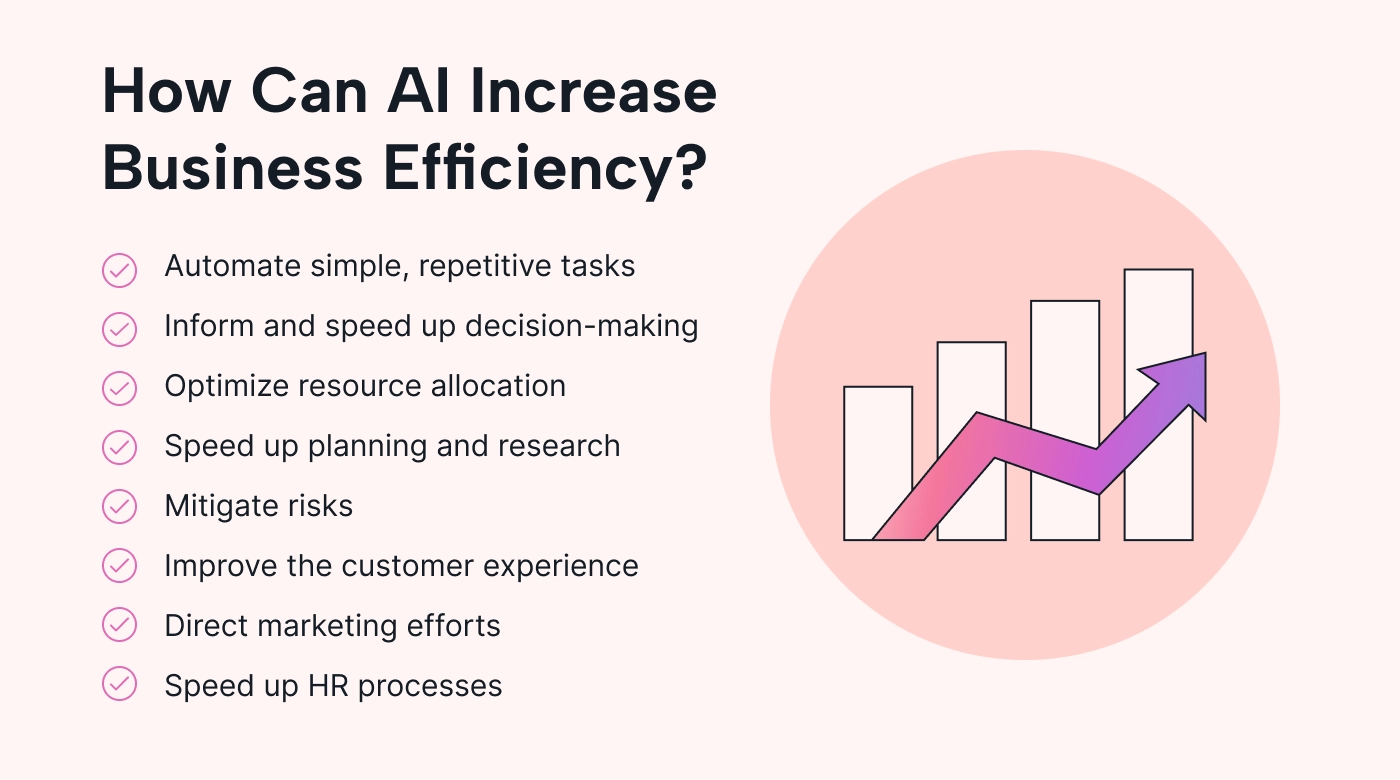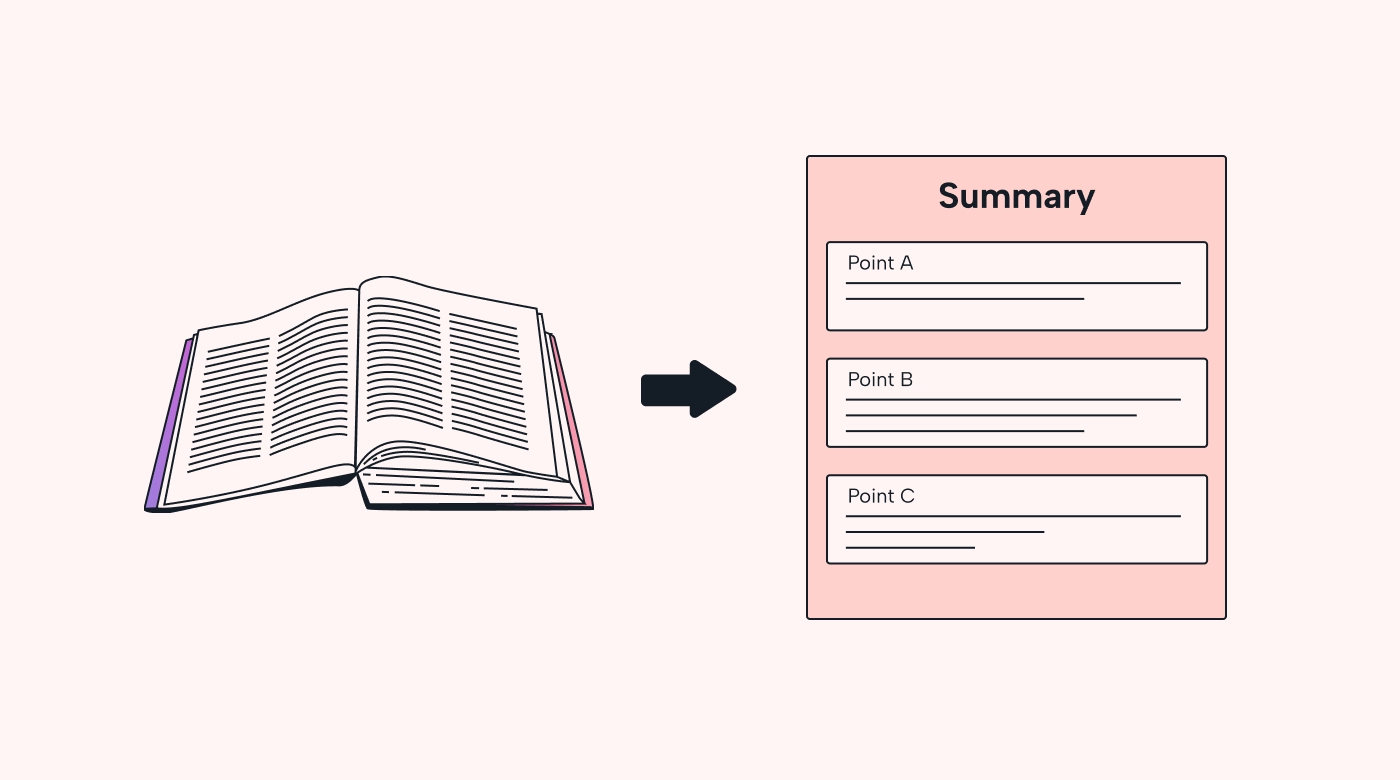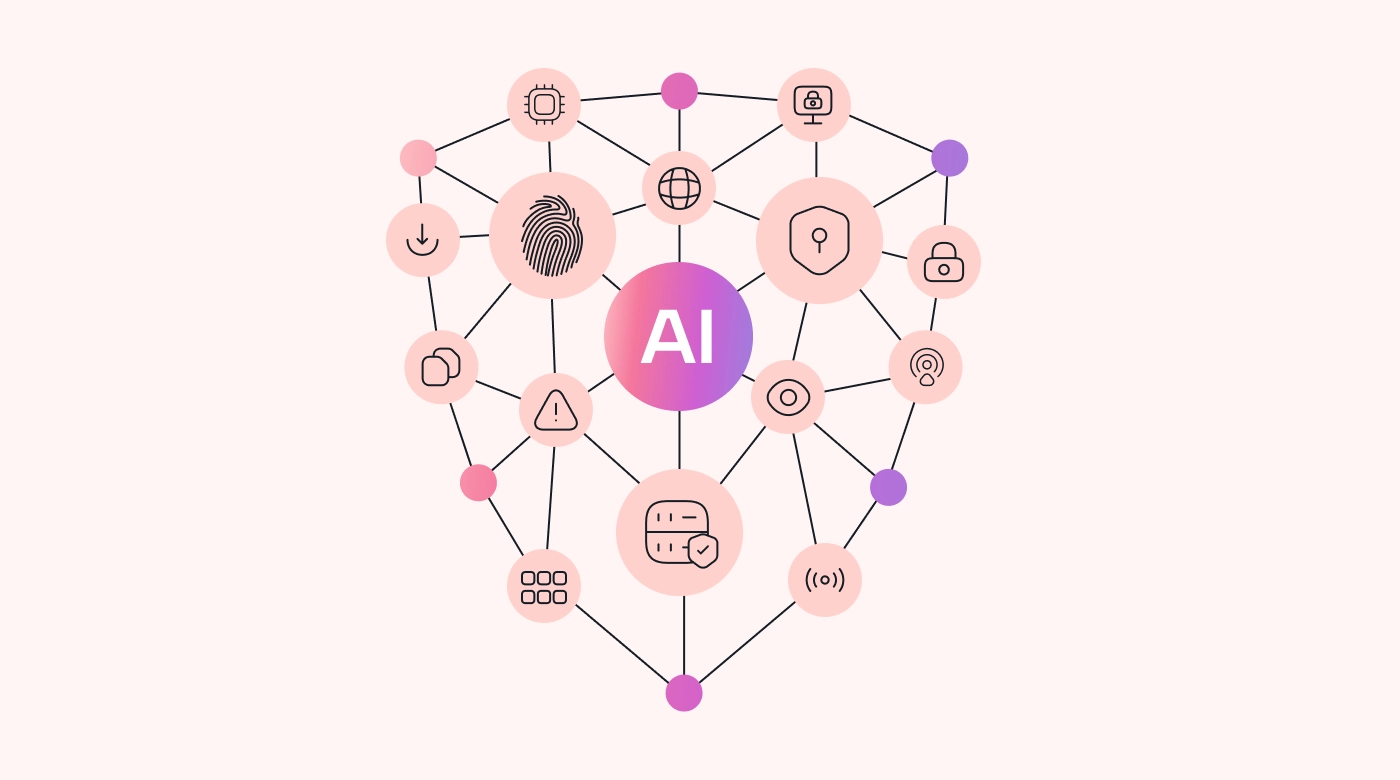From big data analytics powered by artificial intelligence to ChatGPT jokes, there isn’t an area that AI hasn’t touched.
But are businesses making the most of AI’s unique abilities?
Whether you’re a one-person small business or the leader of a mega-corporation, there’s an AI-powered tool that can take your organization to new heights.
In this article, we explore AI process optimization, its benefits, and the ways top industry names are using AI to raise their bottom line.
What is AI process optimization?
To understand AI process optimization, you first need to know about process optimization (without the fancy AI-powered frills).
Process optimization is the systematic approach to analyzing and improving your business processes. The goal is to increase process efficiency, effectiveness, and quality, all of which can increase your bottom line.
AI process optimization is the process of using AI and machine learning software to optimize business processes. It’s the same idea as process optimization, but the inclusion of AI means getting there faster and with fewer errors. The goal is to remove unnecessary tasks and streamline everything that remains.
In 2023, the AI market was valued at 196.63 billion USD.
Why so much?
Because with AI, you can analyze years’ worth of data in minutes to make data-informed decisions that transform the trajectory of your business. You can also automate low-value tasks to instantly free up time for high-value work. Finally, you can analyze each stage of your production process in real time to identify bottlenecks and money pits.
AI process optimization is both powerful and convenient.
How does AI optimize processes?
AI uses machine learning models, computer vision, and natural language processing (NLP) to optimize business processes.
Let’s look at each of these:
- Machine learning uses statistical algorithms to learn to recognize patterns in data, which it then uses to improve its performance.
- Computer vision is a technology that machines use to derive information from images and videos.
- NLP uses computational techniques to analyze and synthesize natural language (language written and spoken by humans).
 |
AI can perform the following functions using these technologies:
- Examine previous performance by processing past data to determine what worked and what didn’t. You can use this data to replicate successful ventures and remove processes that weren’t as effective.
- Detect inefficiencies in processes and alert you of redundant stages or steps. It can also identify which stages delay the process most often or for the longest time, telling you where to focus your improvement efforts to create the most impact.
- Detect mistakes and discrepancies in your systems so you can nip potential disasters in the bud. Some AI technology can even help you correct these mistakes or offer guidance as you address the problem.
- Predict customer behavior by analyzing everything from market trends to user behavior. The technology determines the most likely customer behaviors and identifies their pain points and most pressing needs.
- Uncover ideas for new products by analyzing markets and trends. Although not foolproof, AI can be used to generate ideas for new products and services. It can be an invaluable tool during the idea creation phase since it makes an optimized step-by-step plan for you to follow.
What are the benefits of using AI for process optimization?
Learning to use AI technology can take some time and practice, especially if it’s your first time interacting with this type of software. What makes the effort worthwhile?
Using AI for process optimization results in the following perks:
- Fewer errors. AI effectively removes mistakes caused by human error, leading to improved predictions and outcomes.
- Improved efficiency. AI can spot redundancies and inefficiencies in your processes and cut out hours spent on repetitive and low-skill tasks.
- Improved consistency. Obviously, AI doesn’t have the complex, shifting needs that humans do. Using AI guarantees consistent effort and attention to detail in every task.
- Accessible technology. Our understanding of the power of AI has matured in leaps and bounds, ensuring that AI-based solutions can be offered off-the-shelf at accessible prices — all without compromising on quality.
- Less risk. AI can quickly analyze and apply years’ worth of data to identify potential risks, allowing you to approach them proactively — or avoid them entirely.
- Improved performance. AI gives you deep, actionable insights into large amounts of data, arming you with knowledge that allows you to make the best decisions for your business’s success.
How can AI process optimization help businesses become more efficient?
Now that you understand how AI can help your business, let’s dive into the specifics of what this technology can achieve.
 |
Automate simple, repetitive tasks
AI-powered software can automate tasks like data collection, invoice processing, or even scheduling social media posts. Automation reduces the manual effort associated with routine (often high-volume) tasks, freeing up your time and mental energy to focus on more complex work.
Inform and speed up decision-making
Because AI “learns” how to behave from existing data, all decisions made using it are either data-driven or data-informed. At first, these decisions might be reactionary due to past and current data. But over time, you can switch to a more proactive state as you react to predicted trends.
AI can analyze markets, existing sales data, social media metrics, survey responses, customer feedback, and more to give you a solid foundation of industry knowledge. Additionally, this knowledge can help you approach business decisions (like choosing which product launch to prioritize) with confidence.
Optimize resource allocation
Forty-nine percent of organizations that use data to reduce their expenses are successful. If your goal is to lower the running costs of your business, you can use AI to curate data and start making data-driven decisions.
AI can help you optimize resources like labor and inventory. For example, it can analyze your existing stock and your product sales data from the past month to tell you which purchases you need to make to meet market demand.
Speed up planning and research
Using NLP, AI can summarize large bodies of text to speed up correspondence and research.
You might have already seen certain software platforms adopting these summary features to condense long message chains. This allows you to quickly see where you’re at in the conversation without needing to scroll back for context.
 |
Mitigate risks
AI can often tell when disaster is about to strike through predictive analytics. It can also explain what’s likely to go wrong or where the most damage will be. This knowledge allows you to plan proactively and reduce the amount of effort and resources spent on damage control in the future.
Improve customer experience
Thirty-two percent of marketers use AI and marketing automation to personalize their email messages and offers. This customization has a similar effect to content recommendations found on e-commerce or streaming sites: the customer feels known.
AI can analyze customer feedback to identify customers’ pain points and any areas that need improvement, making it easy for you to focus on improving the most important parts of the customer experience or implementing the most important features.
Chatbots can fill the gaps between business hours to ensure customers always have a way to contact the business and have their basic questions answered, allowing for effortless 24/7 customer support.
Direct marketing efforts
AI technology can segment a large audience into niche groups, making it easy to create targeted campaigns for specific demographics in your customer base.
You can direct your attention toward the right groups at the right times instead of wasting ad resources on groups unlikely to respond to a certain campaign.
Speed up HR processes
HR personnel often get tied up in frustrating administrative work and end up having no time to fulfill their other (arguably more impactful) responsibilities. AI can automate a large portion of HR’s administrative work, like creating job ads, screening resumes, and guiding employees through digital onboarding processes.
Examples of AI process optimization
Industry leaders pave the way for modern businesses, which illustrates the heights of possibility with each new technology.
Here is how some of the best-known industry names use AI and machine learning to optimize their business processes:
Microsoft: IT infrastructure
Microsoft had two main focuses when introducing AI into their IT infrastructure: security and efficiency. They use AI to enhance the security and compliance of their cloud and on-premise security efforts by:
- Simplifying network classification
- Providing robust risk-based isolation of suspicious devices
- Automating access controls for wired and wireless networks
- Managing and monitoring third-party apps
- Analyzing and assessing user usage and access to third-party apps
 |
They boosted their operational efficiency by implementing AI-driven automation to simplify resource management, speed up product and update deployment, and manage network configurations.
Microsoft’s AI technology detects and repairs network issues to create a reliable and resilient network environment, removing the need for human intervention, which has the potential to introduce human error into the equation.
Amazon: Recommendation engine
Amazon, the world’s largest e-commerce company, illustrates one of the most successful uses of AI in an e-commerce space. They use a powerful combination of data analytics and machine learning to create customer-specific product recommendations.
Amazon’s program weighs the following factors:
- Customer behavior: Products the user previously interacted with
- Customer preferences: Products previously purchased, rated, or reviewed by the user
- Item characteristics: How closely an item relates to or resembles other items the user has interacted with
- Similar user behavior and preferences: Products purchased or interacted with by users similar in age or interests
The program also “upsells” products by showing the latest version of whatever tech the user views.
 |
Google: Responsive search ads
Google uses AI to generate ad copy to create responsive search ads. This technology analyzes search queries with Google’s intelligent machine learning algorithm and combines the information found with Persado, another AI-powered technology that creates “emotionally resonant ad copy.”
The result is personalized and targeted ads that conveniently lead the user to whatever product will be most helpful to them.
Shell: Supply chain and operations management
Shell wanted to meet the demands of the evolving energy market and improve the safety of its service stations.
One of their first uses of AI involved deploying reinforcement learning in their exploration and drilling program, which significantly reduced the costs of gas extractions. The machinery learns from past data and curates real-time feedback from the current environment, giving the human operator a better understanding of the environment. This leads to faster results and less damage to the machinery.
Shell also installed vision-enabled cameras at their service stations to detect safety hazards, such as customers lighting cigarettes near the fuel pumps.
How Motion uses AI to design your perfect schedule
Businesses and individuals are always looking for ways to streamline their processes, and AI is a great tool to take advantage of in the modern world.
Motion uses the power of AI to design the perfect schedule for individuals and teams alike. Our intelligent technology can help you with the following:
Manage your tasks
Motion’s Task Manager schedules your tasks around your events to build the perfect custom schedule. It organizes your tasks in order of their importance and deadline. It saves you hours every week by speeding up your planning and reducing wasted time spent manually shuffling tasks when your plans change.
Link your calendars
If you’re chronically busy in both your work and personal lives, being able to see your calendars in one place is game-changing. Motion offers seamless native integrations with Google Calendar, Microsoft, iCloud Calendar, and Apple, as well as integration with other tools through Zapier.
 |
Simple team planning
Motion’s Meeting Assistant helps teams find shared free time to meet. It also shows a “busy” message when a colleague has already set a time block aside for other work, protecting their privacy and productivity. And once a meeting is set, users can join instantly through one-click join notifications.
Start optimizing your processes with Motion
AI process optimization is the secret ingredient that sets many successful businesses apart from their competitors. These businesses are more organized, more informed, and more confident in the decisions they make.
If you’d like to experience some of that confidence for yourself, why not give AI-powered task management a try? Motion transforms your overwhelming to-do list into a beautifully organized, easy-to-follow schedule that reflects your priorities.
Try Motion for free today.

Haylee is a versatile writer with ten years of experience. With a background in marketing and writing for large SaaS companies, Haylee brings her passion for the written word to diverse projects ranging from blog posts and ebooks to direct marketing campaigns.




